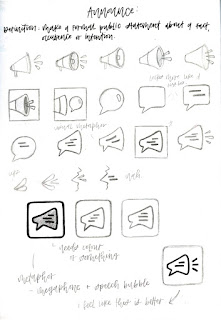Research Question:
How can the aesthetics of simplicity be used to communicate complexity?
Summary of Research Project:
This research project will explore the boundaries of
simplicity and how the aesthetics of this can be used to provide a better understanding
of complex ideas. Research into this form of visual communication will focus
heavily on the use of metaphor and shape-based imagery which will proceed to drive
the practical response to the project. I aim to identify through my findings
whether the aesthetics of design can complicate the overall communication of an
image. I also intend to discover how far an image can be pushed through the process
of simplification and where the limit lies before meaning is lost.
Quotes:
- 'There are limits on how far simplicity of structure can be taken and it is exciting to push things to these limits'
- 'The growing use of symbols on a worldwide scale demands absolute clarity of expression'
- 'This business of two or more images in one must be taken into account by the graphic designer when he is trying to achieve really concentrated visual communication'
Munari, B. (2008). Design as art. London: Penguin Books.










